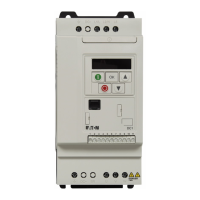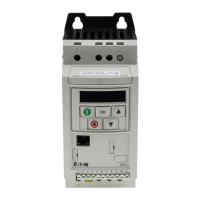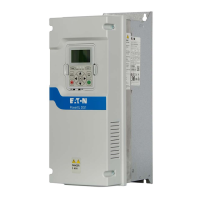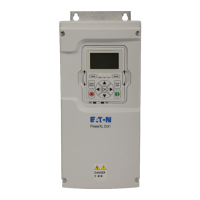2 Engineering
2.4 Safety and switching
32 DC1-S…20…, DC1-S…OE1 Variable Frequency Drives 05/21 MN040058EN www.eaton.com
2.4.2 Fuses
The DC1-S… variable frequency drive and the corresponding supply cables
must be protected from thermal overload and short-circuits.
The fuses will protect the supply cable in the event of a short-circuit, limit any
damage to the variable frequency drive, and prevent damage to upstream
devices in the event of a short-circuit in the variable frequency drive.
2.4.3 Residual current circuit-breaker (RCD)
DC1-S1… and DC1-S2…variable frequency drives work with a single-phase
power supply (L, N), meaning that you can use type A and type B residual
current devices (RCD).
The leakage currents’ magnitude will generally depend on:
• length of the motor cable
• shielding of the motor cable
• height of the switching frequency (switching frequency of the inverter),
• design of the radio interference suppression filter
• grounding measures at the site of the motor.
Other protective measures against direct and indirect contact can be used for
DC1-S… variable frequency drives, including isolating them from the supply
system with the use of a transformer.
→
The fuse ratings and cable cross-sectional areas (wire gauges)
for the connection on the mains side will depend on the
DC1-S… variable frequency drive’s input current I
LN
.
→
For the recommended fuse sizing and assignments, please
refer to → section 4.2, “Fuses”, page 90.
NOTICE
Residual current circuit-breakers (RCD = residual current device)
should
only be installed between
the power feed system
(the AC
supply system supplying power) and the DC1-S… variable
frequency drive – but not at the output to the motor!

